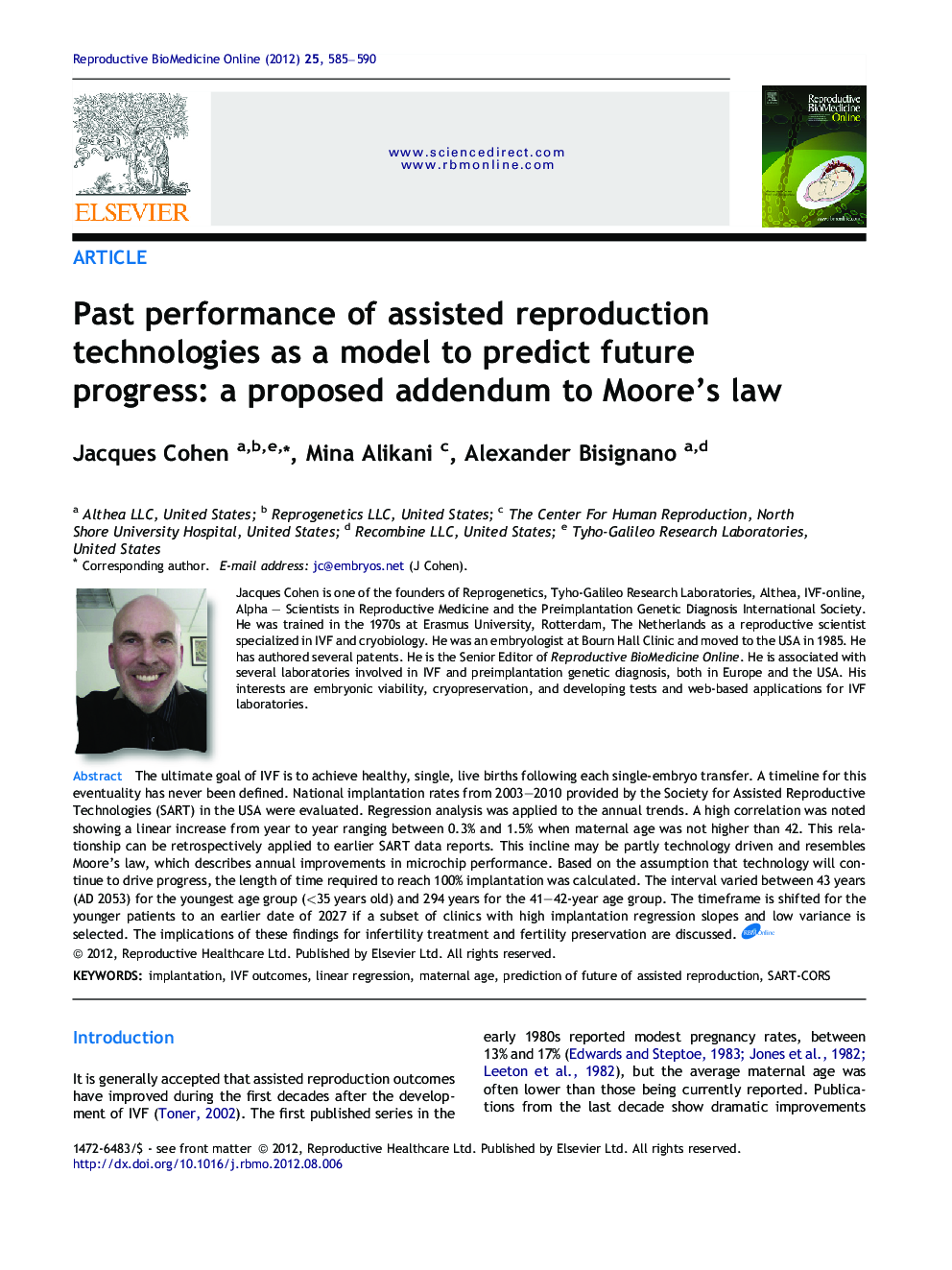| Article ID | Journal | Published Year | Pages | File Type |
|---|---|---|---|---|
| 3970429 | Reproductive BioMedicine Online | 2012 | 6 Pages |
The ultimate goal of IVF is to achieve healthy, single, live births following each single-embryo transfer. A timeline for this eventuality has never been defined. National implantation rates from 2003–2010 provided by the Society for Assisted Reproductive Technologies (SART) in the USA were evaluated. Regression analysis was applied to the annual trends. A high correlation was noted showing a linear increase from year to year ranging between 0.3% and 1.5% when maternal age was not higher than 42. This relationship can be retrospectively applied to earlier SART data reports. This incline may be partly technology driven and resembles Moore’s law, which describes annual improvements in microchip performance. Based on the assumption that technology will continue to drive progress, the length of time required to reach 100% implantation was calculated. The interval varied between 43 years (AD 2053) for the youngest age group (<35 years old) and 294 years for the 41–42-year age group. The timeframe is shifted for the younger patients to an earlier date of 2027 if a subset of clinics with high implantation regression slopes and low variance is selected. The implications of these findings for infertility treatment and fertility preservation are discussed.Success after IVF has steadily improved. Data from US-based clinics are annually collected by the Society for Assisted Reproductive Technologies (SART; www.sart.org). Through SART, individual clinic’s outcomes may be assessed. Although live birth and pregnancy are considered the gold standard of success, the investigators took the approach that those outcomes are often biased due to transfer of multiple embryos. The present analysis was therefore performed on individual embryos, by using the implantation rate to compare national and individual clinic datasets. National implantation rates show a linear increase from year to year ranging between 0.3% and 1.5% for patients aged <43 years. We postulate that this linear trend can be traced back to 1985 even though statistical analysis could only be applied to the implantation data from 2003–2010. We expect that this annual incline is partly technology driven. This is an intriguing effect also seen in the computer industry where there has been a doubling of computer speed and memory for the past 47 years, a phenomenon anticipated by Moore’s law. We predict that the annual increase in implantation will also continue as new technologies become available. Based on current trends, the length of time for 100% implantation rates was calculated. Time to achieving 100% implantation varied between 43 years (AD 2053) for the youngest age group (<35 years old) to 294 years for women 41–42 years old. Some clinics may report a perfect success earlier than others. However, implantation does not guarantee birth.
